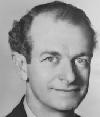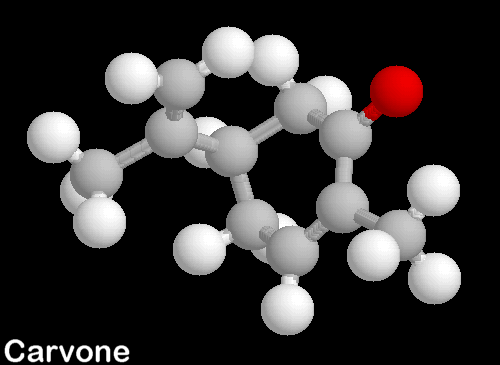Polar
Covalent
Bonds
Carbon dioxide, CO2, is a molecule with such polar bonds. The electrons in those O=C=O double bonds are unequally shared. Not surprisingly, oxygen, with its much greater electron affinity, gets more than its share, and each C=O bond is polarized...but not ionized, that is, the molecule is not [O2-] [C4+] [O2-].
But while both bonds are polar, the CO2 molecule is not polar!
The explanation behind this seeming paradox is that O=C=O is linear, and the dipole vector stretching left from C to the first O is vectorially cancelled by an identical one stretching right
Hence the symmetry of carbon dioxide prevents the polar bonds from becoming a polar molecule.
Polar
Molecules
..
H : O : H
"
since Lewis structures aren't meant to show the 3d structure of the molecule.
(After all, the structures are all drawn in a plane; do we imagine that
therefore all molecules are flat? Not a bit of it.) But we'd do greater justice
to water if we made its Lewis structure
..
H : O :
"
H
HWhile it's true that the water molecule has symmetry (symmetry elements, like its rotation axis midway between the hydrogens and the two mirror planes that contain it, are a fascinating feature of molecules that we'll visit in later courses), it doesn't have CO2's inversion symmetry that cancels CO2's dipoles. So water is indeed polar.O
H
Polar
Water
But is it only oxygen's rapacious electron affinity which turns this trick?
No. It is necessary for oxygen to hold onto its own electrons as well as make a successful bid for electrons of others which ensures the polarity of many of its bond combinations. So if we were to seek a Holy Grail of polarity or its opposite, we ought to look at both electron affinity and ionization potential.
Electro-
Negativity

Linus Pauling
MS Encarta 97
Of course, it's really the negative of electron affinity that's used, since a very negative electron affinity means that the potential of the atom lowers if you give it another electron. But the sign change in nitpicking; the important feature is that small IP and small EA give a small electronegativity, designated as c, the Greek letter "chi". Small c means an atom relatively uninterested in holding electrons while a large c betokens one very hungry for electrons.
Sample
Electro-
negativities
H:2.1
Li:1.0 Be:1.5 B:2.0 C:2.5 N:3.1 O:3.5 F:4.1
Na:1.0 Mg:1.3 Al:1.5 Si:1.8 P:2.1 S:2.4 Cl:2.9
K:0.9 Ca:1.1 Ga:1.8 Ge:2.0 As:2.2 Se:2.5 Br:2.8
Rb:0.9 Sr:1.0 In:1.5 Sn:1.7 Sb:1.8 Te:2.0 I:2.2
Cs:0.9 Ba:0.9 Tl:1.5 Pb:1.6 Bi:1.7 Po:1.8 At:2.0
One of the dull combinations is C-H with a Dc only 0.4, clearly not ionic. No wonder that hydrocarbons, CnH2n+2, don't want to mix with water. Water dissolves polar creatures rather well, but whatever the geometry of the hydrocarbon, no symmetry or lack thereof can make up for the fact that each and every bond is hopelessly covalent.
Organic
Chemistry
 Brady sneaks organic chemistry into many chapters hoping to make it
palatable by accretion, no doubt. And while many organic molecules, like
that for spearmint oil (at right), are unquestionably fascinating, the
subject is rich enough to deserve its own chapter (#21) and more rather
than being trotted out piecemeal.
Brady sneaks organic chemistry into many chapters hoping to make it
palatable by accretion, no doubt. And while many organic molecules, like
that for spearmint oil (at right), are unquestionably fascinating, the
subject is rich enough to deserve its own chapter (#21) and more rather
than being trotted out piecemeal.
Still, organic compounds are all around us, and, with the exception of water, constitute the majority of each of us! So getting familiar with some of them early on appears to be Brady's goal.
So it probably wouldn't hurt to pop off to a few lectures on organic chemistry to get your feet wet. If you find your own appetite whetted, there are countless webpages devoted to organic chemistry tutorials!